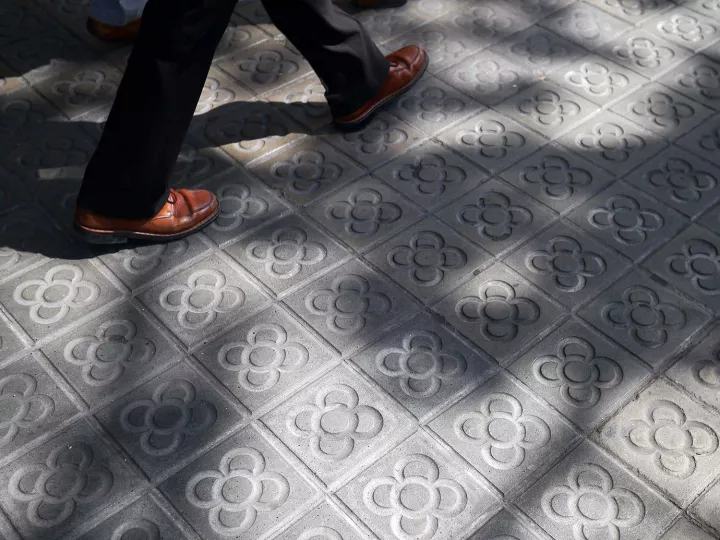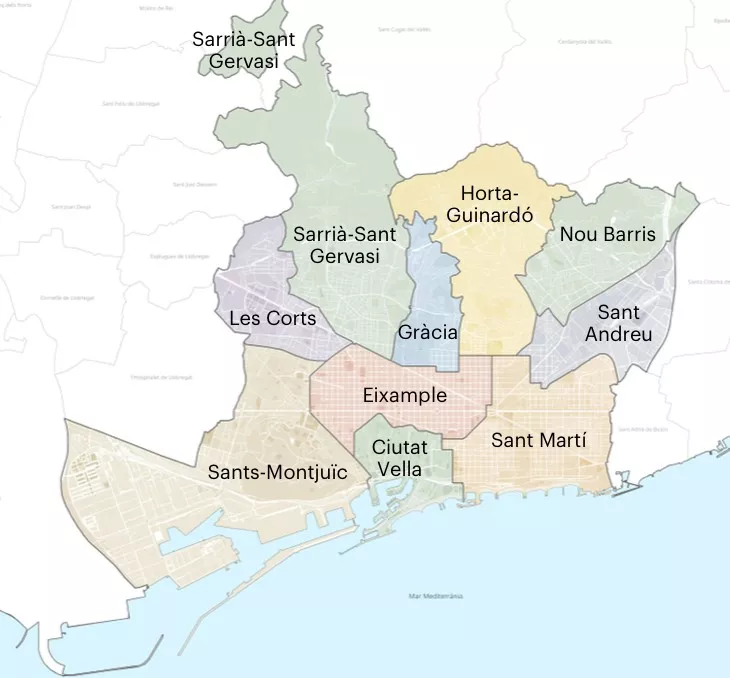Getting your bearings in the city

Find your location in the city
Barcelona is a relatively small city, covering an area of only some 100 km2. Hence it has a human and very comfortable scale that allows you to travel all around it on foot or by bicycle.
It is situated between the River Llobregat (to the south) and the River Besòs (to the north) and between the Mediterranean sea (to the east) and the Collserola mountain range (to the west).
Barcelona’s residents sometimes refer to an address using those references. So, a place might be described as towards the sea or towards the mountains or towards the River Besòs when it is towards the north or towards the River Llobregat when it is towards the south.

Explore the official web map of the city of Barcelona, which contains information about services, public transport, traffic, the city’s districts and neighbourhoods, and more.
You can also go to printable maps of Barcelona, with various options optimised for correct printing, in small formats (A3) and large formats.
Neighbourhoods and districts
The city is divided up into 10 districts and 73 neighbourhoods. You will find information on each district’s features on Living in the neighbourhood.
We invite you to discover the city through the City's points of interest (PIC) web app, which is available in Catalan, Spanish, English and French. You will be able to discover each district's points of interest, as well as its natural spaces, museums, cultural-heritage elements and so on.
For further general information on the city, you can also visit the Meet Barcelona website, which is available in Catalan, Spanish, English and French.
Addresses
Addresses are expressed as follows: they begin with the name of the street, followed by the number of the street, floor and door. So, for example, the address Vía Laietana, 102, 2.º 1.ª, stands for a flat found in Vía Laietana, number 102, on the second floor and door number 1.
When you are inside a building, whether an office or dwelling, remember that the ground floor is usually indicated by 0 or the initials “PB”. Flats located on ground floors are referred to as bajos (in Catalan, baixos, or abbreviated as bxs.).
But flats and offices are also frequently found on a mezzanine floor, between the ground and the first (also known as principal): what are called entresuelos (in Catalan, entresòl, or abbreviated as entl.). Underground floors are usually referred to with minus symbols: “-1”, “-2”, for example. Flats and offices on top floors are called áticos and sobreáticos.
Postal service
The state's postal service is provided by a public company referred to informally as Correos. It has offices throughout the city. You can easily spot them by their yellow sign and Correos logo.
You can send money by a postal order, post parcels and letters, buy stamps and send registered post or rent a post-office box.
Not all offices have the same opening hours, so it is best to consult a post office's opening hours before you visit it, which you can do on this Correos link.
You can also buy stamps for your letters at tobacconist shops and post them, of course, using any of the typical yellow post boxes you’ll find throughout the city.


